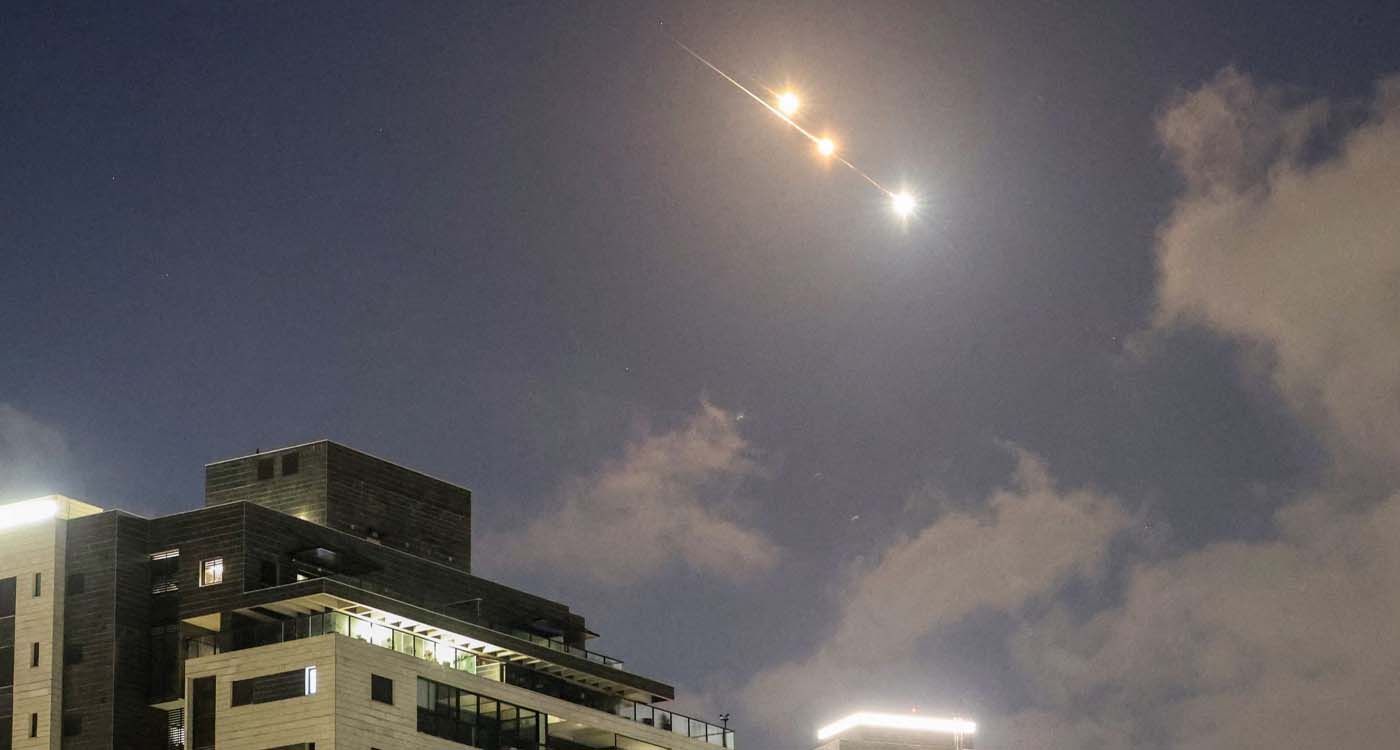- Home
- Middle East
- Iran’s Formidable Arsenal… and Its Logistical Weaknesses

©Jack Guez/AFP
The Middle East is once again engulfed in a major military confrontation between Israel and Iran. In a calculated display of force, Tehran has mobilized a significant portion of its extensive ballistic missile arsenal, aiming to project strength and deterrence. Yet beneath this formidable stockpile lies a structural vulnerability, one that exposes the limitations of Iran’s broader military apparatus.
A Massive Ballistic Arsenal
According to a 2022 report by US Central Command (CENTCOM), Iran possesses the largest ballistic missile arsenal in the region, with more than 3,000 missiles at its disposal. This expansive stockpile includes a wide array of delivery systems, ranging from short-range ballistic missiles (SRBMs) to medium-range ballistic missiles (MRBMs).
Among the SRBMs is the Fateh-110, a solid-fuel missile with an estimated range of 300 kilometers and a 450-kilogram warhead, typically launched from mobile truck platforms. Its upgraded variant, the Fateh-313, extends the range to nearly 500 kilometers with a circular error probable (CEP) of just 10 to 30 meters. Heavier SRBMs - such as the Zolfaghar (700 km) and Dezful (1,000 km) - carry payloads between 500 and 600 kilograms and are equipped with advanced guidance systems.
On the MRBM front, Iran still fields liquid-fuel missiles derived from North Korea’s arsenal, most notably the Shahab-3, which has a range of approximately 1,300 kilometers. It has since evolved into variants like the Ghadr-1 and Emad, capable of reaching 1,600 to 1,800 kilometers.
In May 2023, Iran tested the Khorramshahr-4 - nicknamed “Kheibar” - which boasts a 2,000-kilometer range and a 1,500-kilogram payload. The Ministry of Defense emphasized its quick-launch capability, branding it as both a tactical and strategic asset.
More recently, Iran has moved toward advanced solid-fuel missile systems. The Sajjil (2,000 km) is already operational, while a hypersonic variant of the Kheibar - named Fattah and reportedly capable of reaching 1,400 kilometers - is currently undergoing trials.
Most of Iran’s modern missiles now feature precision guidance technologies, including maneuverable reentry vehicles and satellite-based navigation systems, which have dramatically improved their accuracy and strike potential.
Mobile Launchers and Underground Silos
To mitigate losses in the event of an attack, Iran has adopted a strategy centered on mobility and concealment, relying heavily on mobile launchers and fortified underground bases - tactics that closely mirror those employed by Hezbollah. As recently showcased in Hezbollah’s “Imad-4” tunnels, Iran stores and prepares many of its missiles deep beneath the surface, within subterranean galleries carved into layers of bedrock dozens of meters thick.
According to the Washington-based Institute for the Study of War (ISW), Tehran has spent years constructing “underground missile installations” engineered to withstand airstrikes.
These tunnels serve both as storage and concealment hubs, enabling the dispersal of missiles to surface sites. Transporter-erector-launchers (TELs) are often shrouded under tarps, camouflaging them as civilian trucks to avoid detection.
In one telling instance, the British news agency Reuters captured video footage of dozens of such disguised trucks moving through Hezbollah’s Imad-4 tunnel prior to a launch - a maneuver reflecting Iran’s broader strategy.
In 2024, the Iranian embassy in Beirut confirmed that the Islamic Republic possesses “dedicated underground missile stations” capable of striking Israel. These subterranean concealment measures significantly increase the number of potential launch sites, making them far more difficult to detect and neutralize.
Too Many Missiles, Too Few Launchers
Despite its scale and ambitions, Iran’s missile program suffers from critical operational shortcomings. Chief among them is a structural imbalance between the sheer number of missiles and the limited number of available launch platforms. Prior to the latest hostilities, Israeli intelligence estimated that Iran held approximately 3,000 ballistic missiles, but possessed only between 150 and 250 mobile launchers.
Similarly, a report by the US Congressional Research Service noted that Iran has “fewer than 100” transporter-erector-launchers (TELs) available for its hundreds of short-range ballistic missiles SRBMs. This unfavorable ratio means that only a limited number of launchers can be operational during any given strike. As a result, the launch rate, i.e., the number of missiles that can be fired in a short timeframe, is automatically constrained.
In addition, most of Iran’s older liquid-fuel missiles (such as the Shahab-3, Ghadr, and Qiam) require fueling on-site before launch, significantly delaying deployment. For this reason, Iran is increasingly turning to solid-fuel missile systems, which are easier to store, require less on-site preparation, and can be launched on short notice, making them more resilient in a fast-moving conflict.
Israel’s Strategy
In its opening strikes on Friday, Israel focused squarely on Iran’s missile launch infrastructure. The Israeli army carried out targeted strikes on key logistical hubs and launch sites, aiming to disrupt Iran’s ability to initiate sustained missile attacks.
According to the Institute for the Study of War (ISW), Israeli forces “continued targeting and destroying missile launchers” throughout the weekend, effectively curtailing Iran’s ability to mount a large-scale retaliation.
Footage from combat drones revealed multiple Iranian transporter-erector-launchers (TELs) damaged in the field, including some identified as platforms for the Haj Qasem missile, which boasts a range of approximately 1,400 kilometers. These TELs were struck while attempting to move into firing positions.
By Monday, Israeli military spokesperson Effie Defrin announced that one-third of Iran’s ballistic missile launchers had been destroyed and that Israel was successfully intercepting the majority of incoming strikes.
Fordow: The Airstrike Dilemma
Buried 60 to 90 meters beneath the surface, Iran’s Fordow nuclear facility is among the most heavily fortified sites in the country - if not the region. According to the Foundation for Defense of Democracies (FDD), only the US-manufactured GBU-57 Massive Ordnance Penetrator, delivered by a stealth B-2 bomber, has the capability to breach its deep underground defenses.
Israel, by contrast, lacks weaponry with such penetrating power. Its arsenal includes low-yield bunker-buster bombs, which are insufficient to reach targets buried at such depths.
Following Friday’s strikes, Israel has reportedly damaged nuclear-related infrastructure in Natanz, Isfahan, and Tehran, and has assassinated several nuclear scientists. Fordow, however, has not been directly targeted, despite the fact that the site houses advanced centrifuges capable of enriching uranium to 60%, a level that can be weaponized (90%) within days.
Tehran has since claimed it relocated its enriched uranium stockpiles to undisclosed locations, in violation of the Nuclear Non-Proliferation Treaty (NPT). This development has fueled growing fears of a potential nuclear breakout: a scenario in which Iran could swiftly shift from uranium enrichment to the actual production of nuclear weapons, should it choose to cross the threshold.
The central question now is whether Iran - and its increasingly depleted network of regional proxies - can address these glaring logistical vulnerabilities, or whether it will continue to rely on hollow slogans and displays of bravado to mask its strategic weaknesses.
Read more





Comments